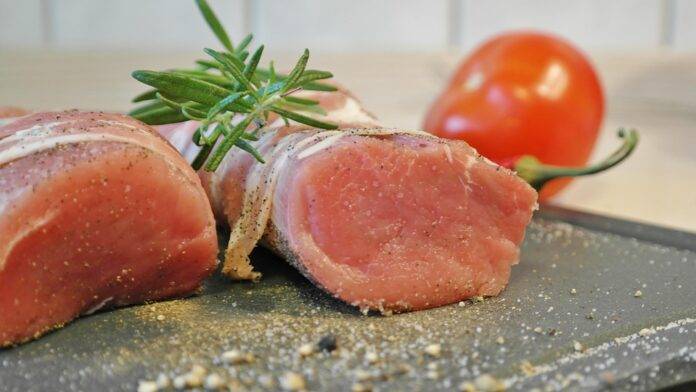Executive Summary
The global bacon market is projected to witness significant growth by 2025, driven by increasing consumer demand, evolving dietary habits, and innovations in product offerings. This report provides a comprehensive analysis of the global bacon brands market, focusing on market trends, growth drivers, challenges, and forecasts. It also includes detailed financial data, market volumes, and insights into key players within the industry.
Market Overview
The global bacon market was valued at approximately USD 25 billion in 2020 and is expected to grow at a compound annual growth rate (CAGR) of around 5% from 2021 to 2025. Factors such as rising disposable incomes, changing lifestyles, and growing popularity of bacon as a versatile ingredient in various cuisines are fueling this growth.
Market Segmentation
The market can be segmented based on product type, distribution channel, and region.
By Product Type
1. **Streaky Bacon**: This is the most popular form of bacon, accounting for around 40% of the market share.
2. **Back Bacon**: Known for its leaner profile, back bacon holds approximately 25% of the market share.
3. **Turkey Bacon**: Gaining traction among health-conscious consumers, turkey bacon represents about 15% of the market.
4. **Other Variants**: This includes specialty bacon, organic bacon, and flavored bacon, holding the remaining 20% market share.
By Distribution Channel
1. **Supermarkets/Hypermarkets**: They dominate the distribution channel with around 55% market share due to their wide reach and product variety.
2. **Convenience Stores**: These account for approximately 25% of sales, particularly in urban areas.
3. **Online Retail**: This segment is growing rapidly and currently holds about 15% of the market.
4. **Others**: This includes food service outlets and specialty stores, contributing the remaining 5%.
By Region
1. **North America**: The largest market, accounting for roughly 35% of global revenue, driven by high consumption rates in the United States and Canada.
2. **Europe**: Holds about 30% of the market share with strong bacon consumption in the UK, Germany, and France.
3. **Asia-Pacific**: This region is experiencing rapid growth, expected to reach 20% market share by 2025, particularly in China and Japan.
4. **Latin America and Middle East & Africa**: These regions collectively account for around 15% of the market, with potential for growth due to increasing meat consumption.
Market Drivers
1. **Rising Demand for Processed Meat**: The increasing preference for convenience foods has led to a surge in demand for processed meat, including bacon.
2. **Health Trends**: Innovations in healthier bacon options, such as nitrate-free and organic products, are attracting health-conscious consumers.
3. **Culinary Versatility**: Bacon’s ability to enhance flavors in various dishes, from breakfast items to gourmet meals, supports its growing popularity.
Market Challenges
1. **Health Concerns**: Rising awareness regarding the health impacts of consuming processed meats, including bacon, poses a challenge to market growth.
2. **Regulatory Issues**: Strict regulations regarding food safety and labeling can impact production processes and costs.
3. **Competition from Alternatives**: The rise of plant-based protein sources could challenge traditional bacon products.
Competitive Landscape
The competitive landscape of the global bacon market is characterized by the presence of several key players. Some notable brands include:
1. **Smithfield Foods**: A leading player in the U.S. market, known for its wide range of bacon products.
2. **Hormel Foods Corporation**: Offers various bacon types including the widely recognized “Hormel Bacon.”
3. **Tyson Foods, Inc.**: A significant contributor to the global bacon market with a focus on premium products.
4. **Oscar Mayer**: A well-known brand offering a variety of bacon products, including turkey bacon options.
These companies are investing in product innovation, marketing strategies, and expanding distribution networks to maintain their market positions.
Financial Analysis
The financial performance of the bacon market reflects steady growth, with revenues expected to reach approximately USD 32 billion by 2025. The following financial indicators highlight key insights:
1. **Revenue Growth**: The market is projected to grow from USD 25 billion in 2020 to USD 32 billion in 2025, representing a CAGR of 5%.
2. **Profit Margins**: The average profit margin for bacon manufacturers is estimated to be around 15%, though this may vary based on production costs and market competition.
3. **Investment Trends**: Companies are increasingly investing in marketing and R&D, estimated at around 10% of their annual revenue, to cater to evolving consumer preferences.
Future Outlook and Trends
The bacon market is poised for continued growth, with several emerging trends expected to shape its future:
1. **Sustainability Initiatives**: Brands are focusing on sustainable sourcing and production practices to appeal to environmentally conscious consumers.
2. **Product Innovation**: There is a growing trend toward flavored and gourmet bacon options, catering to diverse culinary preferences.
3. **Health-Conscious Offerings**: The introduction of low-sodium, organic, and nitrate-free bacon products is likely to gain traction among health-focused consumers.
4. **E-commerce Growth**: As online shopping continues to rise, brands are enhancing their online presence to capture the growing segment of consumers preferring to shop online.
Conclusion
The global bacon brands market is on a robust growth trajectory, driven by changing consumer preferences and innovative product offerings. While challenges such as health concerns and competition from alternatives exist, the overall outlook remains positive. Stakeholders in the industry must adapt to emerging trends and consumer demands to thrive in this dynamic market.
[Read More: The State of the Global Pork, Swine, Pig, and Bacon Industry: A Comprehensive 2025 Report]


